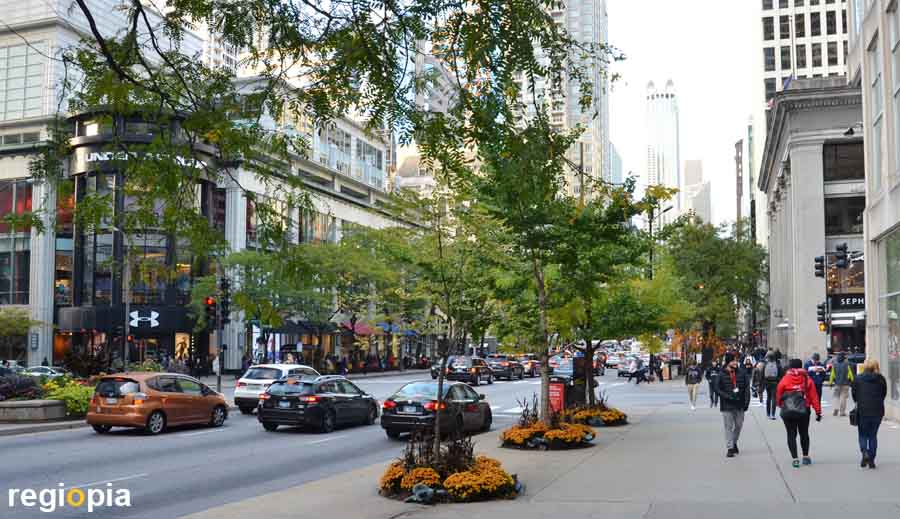
Magnificent Mile
The Magnificent Mile is Chicago's Champs Élysées, home to major department stores, malls, and flagship stores of famous fashion brands. The streets official name is Michigan Avenue, the "Magnificent Mile" is the section between Randolph Street in the south and Lake Shore Drive in the north. On Magnificent Mile you can stay in luxury hotels and dine at fancy restaurants. The Water Tower, Wrigley Building and the Tribune Tower stand aswell on this famous avenue. Another attraction is the John Hankook Tower with the 360 Chicago observation deck.
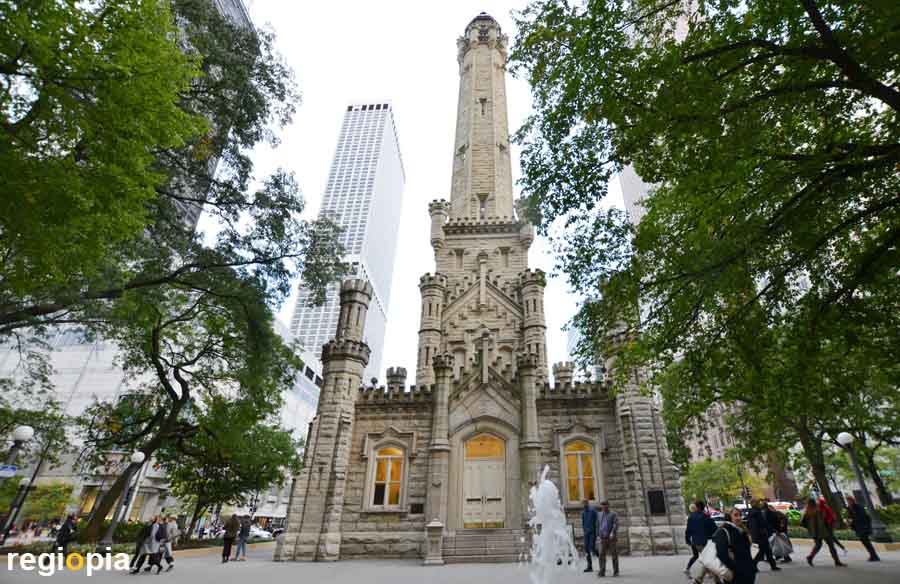
Water Tower
The Water Tower is one of the few structures in the center of Chicago that survived the Great Fire of 1871. The 55 m high Water Tower was built in 1869 as a pumping station. The architect William W. Boyington was inspired by the design of English castles. The bright limestone is a reminiscent of the Tower of London, but the narrow structure looks like a lighthouse. The neo-Gothic style was ridiculed and rejected by the people. But because the building survived the Great Fire, it became the landmark of Chicago. Today, the Water Tower is the most famous attraction in Chicago. The building houses the tourist information office and the art gallery of Chicago.
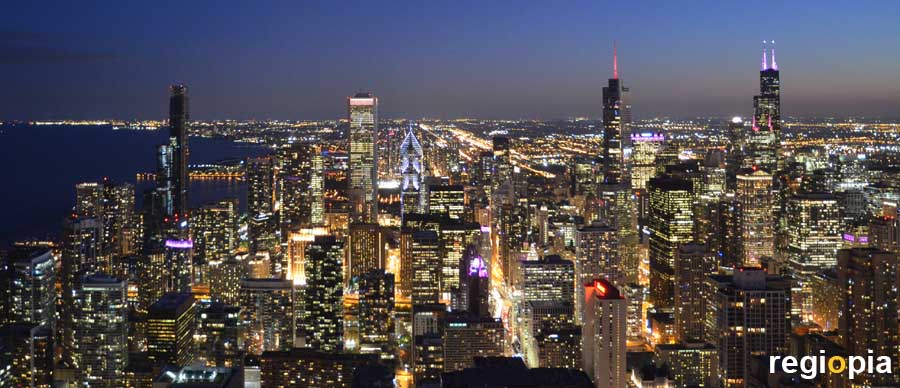
John Hancock Center
The John Hancock Center was opened in 1969 and was the tallest skyscraper in the Chicago until 1973. The eye-catching tower is 344 m tall, without antenna. From the observation deck, you will enjoy the most beautiful views on Chicago and the Lake Michigan.
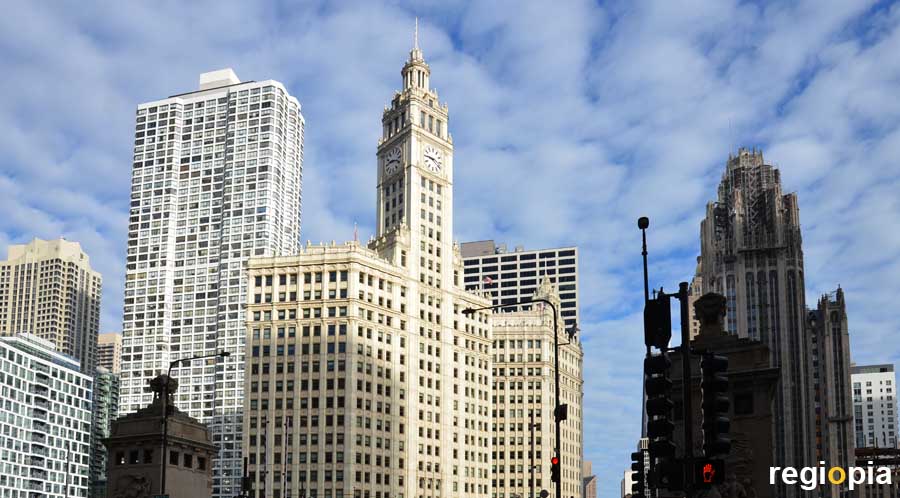
Wrigley Building
The chewing gum King William Wrigley decided to built the companys headquarters at the north shoe of the Chicago River. The Wrigley Building was the first skyscraper on this side of the river. It's on Michigan Avenue, also known as Magnificent Mile. The Wrigley Building has two structures, the south tower with a hight of 133.5 meters and a the north tower with 89.5 meters. The south tower was built in 1921 on the model of the bell tower La Giralda in Seville, the north tower followed in 1924. Both towers are connected by bridges. The bridge on the 14th floor was built in 1931. The Wrigley Building has been clad in white terracotta tiles that shine in the sunlight.
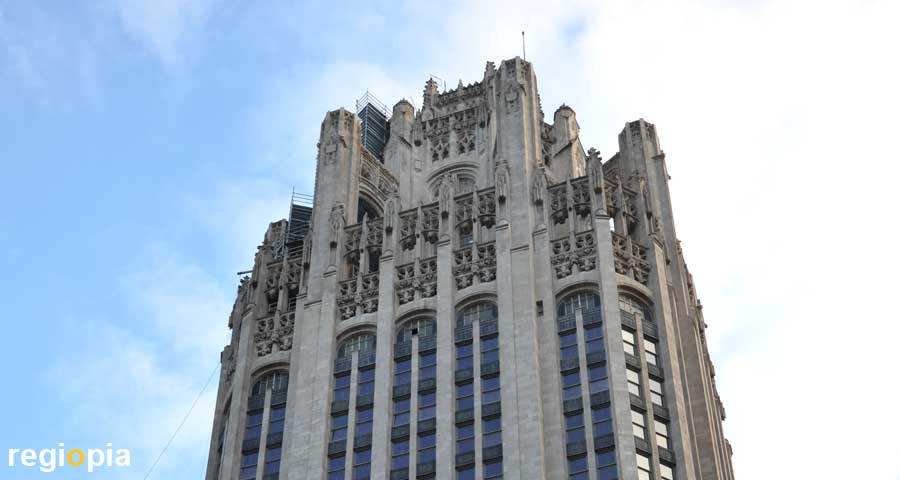
Chicago Tribune Tower
The Neo-Gothic Tower is the headquarter of the newspaper "Chicago Tribune". The newspaper started an architectural competition in 1922, to build the most beautiful building in the world. More than 250 architects from all over the world participated in the competition. Raymond Hood and John Mead Howell from New York finaly built the 141 m high "Tribune Tower" in 1925. Rymond Hood was the architect of the Rockefeller Center.
ads
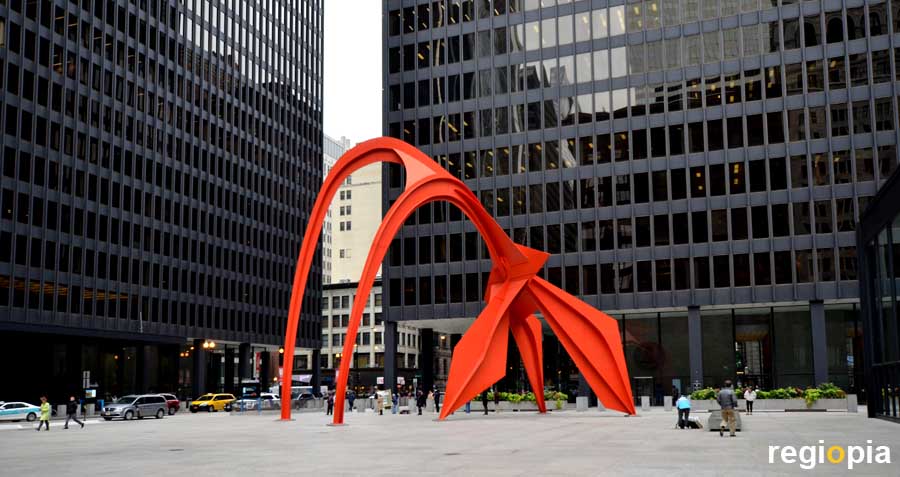
Federal Plaza
The Federal Plaza is a square with three buildings by Ludwig Mies van der Rohe. Two office towers and a flat building with a post office. The rectangular space is determined by the black facades of the buildings. The sculpture Flamingo by Alexander Calder skilfully contrasts with their round steel arches, with the rectangular cubes of the architecture. The 16-meter-high flamingo also stands out clearly from the environment because of its orange-red color called "calder red". The Federal Plaza was opened in 1974, the Flamingo was completed in 1973. The Federal Plaza is an graet artwork of architecture, space and sculpture.
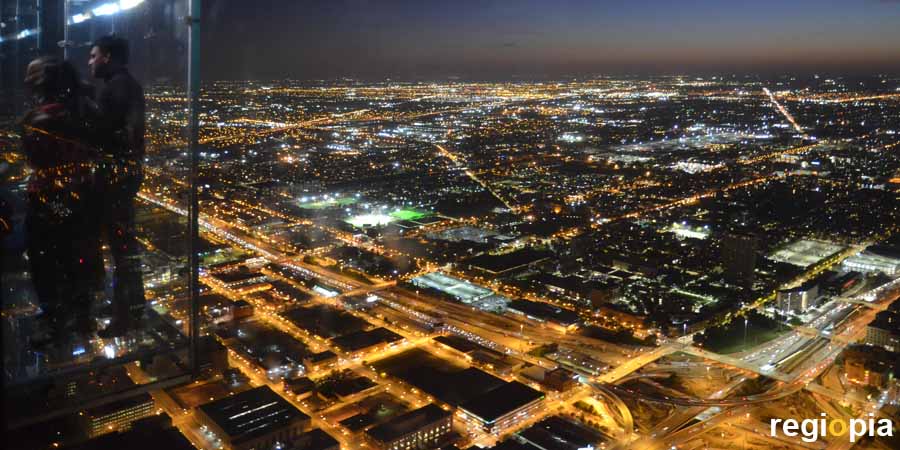
Willis Tower
The Willis Tower (formerly known as Sears Tower) was the tallest skyscraper in the world until 1998. The 443 m tall structure was built in 1974 by the architects of SOM. The Willis Tower is still the tallest skyscraper in Chicago and if antennas are not considered as part of the structure, it is even taller then One Wold Trade Center in New York City. The observation plattform Skydeck on the 103 floor is one of the top attractions of Chicago. Glass boxes called Ledges stand out of the facade and offer glaring views into the abyss. If you want to experience the sunset from the viewing platform, you should enter the tower at least two hours earlier, because at this time the greatest rush prevails and the waiting time in the queue in front of the elevator is about 1 hour. To enter one of the two Ledges you have to queue again. It is crowded but the view from the Willis Tower is amazing. It is one of the tourist attractions no one should miss.
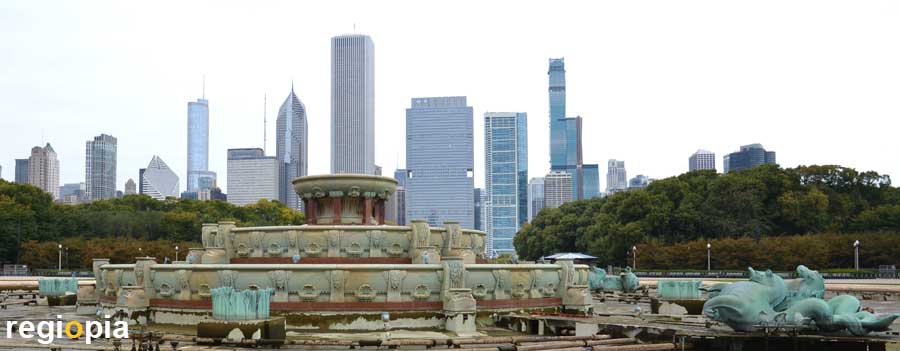
Buckingham Fountain
The Buckingham Fountain is a famous landmark of Chicago. The fountain in Grant Park was completed in 1927 and dedicated to Clarence Buckingham, who died in 1913. The Buckingham Fountain was designed by Edward Bennet and sponsored by Kate Buckingham to commemorate her Brother.
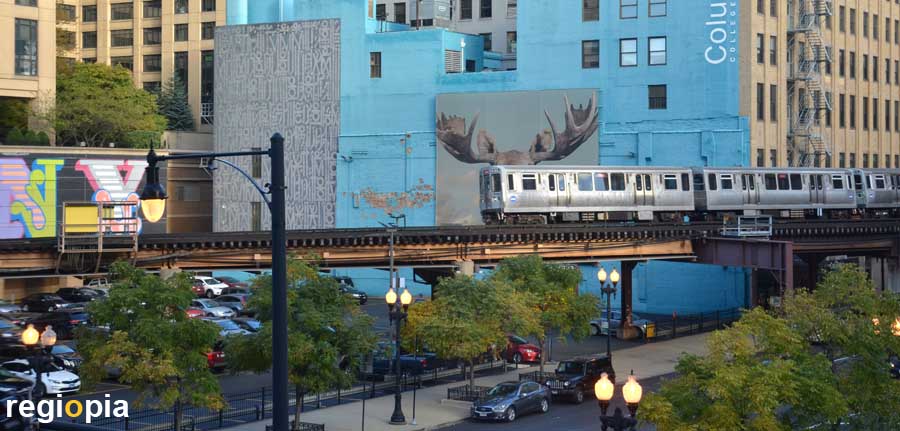
Chicago Elevated "L"
The Chicago Elevated Railroad "L" operates 8 m above road level. In the center the route runs in a circle "loop". The first line started it's service in 1892. The system has been extended and today there are also subway lines crossing the center. The station "Quincy" has been restored to it's historic appearance. The Buckingham Fountain is one of the highest fountains in North America and is beautifully lit in the evening. The beautiful fountain is arguably Chicago's most romantic sight. The fountain is turned off between October and April, then you can only see the empty basin. The best time to visit Chicago is the summer.
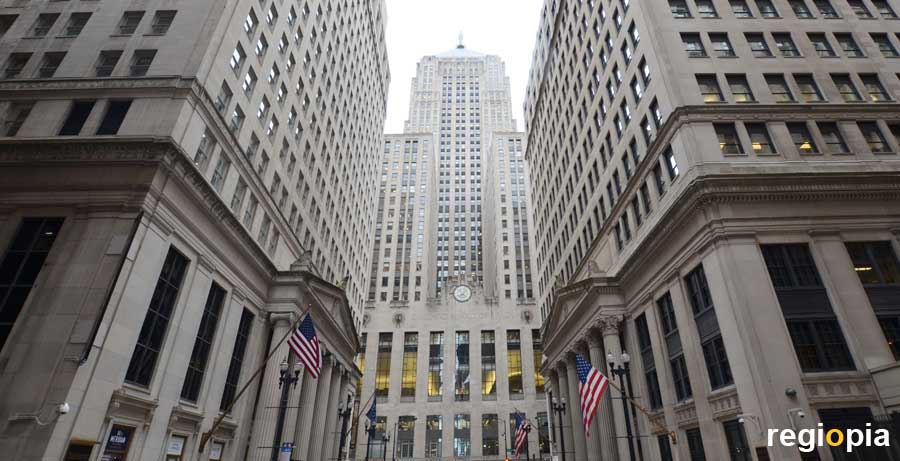
Chicago Board of Trade
The Chicago Board of Trade was founded in 1848 because agricultural products are perishable commodities, so it is better to sell them early as futures. In addition, you can adjust the production to the market. For the Midwest, Chicago was the gateway to the world. Goods were loaded on ships and distributed via the Great Lakes across North America. Then the railroad took over this kind of transport. This made Chicago a great city and the largest slaughterhouse in America, because it is easier to transport meat than live animals.
The Chicago Board of Trade Building was constructed in 1930 by the architects Holabird & Root. The Art Deco architecture is simular to the Empire State Building in New York, which was completed in 1931. The skyscraper with a hight of 184 m, was the tallest skyscraper in Chicago until 1965. On the roof top stands a 9.5 m high statue of the Roman goddess of fertility Ceres. An extension by architect Helmut Jahn was built on the south side in 1980, referring to the architecture of the main building.
There are several trading rooms in the tower, called Pits. But most of the trading at the Chicago Mercantile Exchange (CMEGroup) is done electronically.
ads
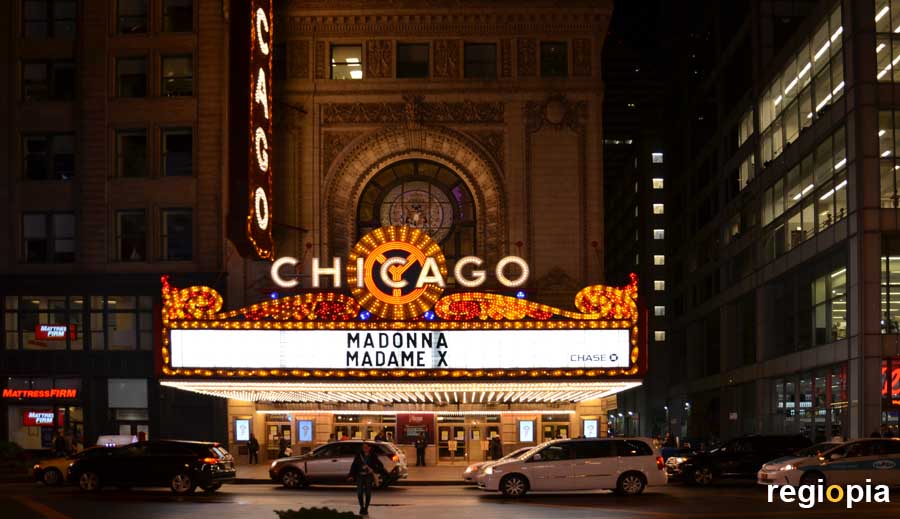
The Chicago Theatre
The Chicago Theater is one of Chicago's most famous sights. The marquee with CHICAGO in front of the building, has become a trademark of the city. When Chicago plays a major role in a movie, this building is shown on the screen, it is a signature, just like the Hoolywood Sign in Los Angeles. Behind the letter C in the middle, is a circle of light with a Y. This is not a peace symbol or something, but represents the confluence of the Chicago River with the Ship Canal at Wolf Point. At its opening in 1921, the cinema was called Balaban and Katz Chicago Theater. After the theater got new owners and was no longer used as a cinema, the name was reduced to Chicago Theater.
The building was designed by the architects Rapp and Rapp from Chicago, who then built more than 30 movie theaters in the United States. The theatre accommodates 3,600 spectators and is now used for concerts.
www.msg.com/the-chicago-theatre
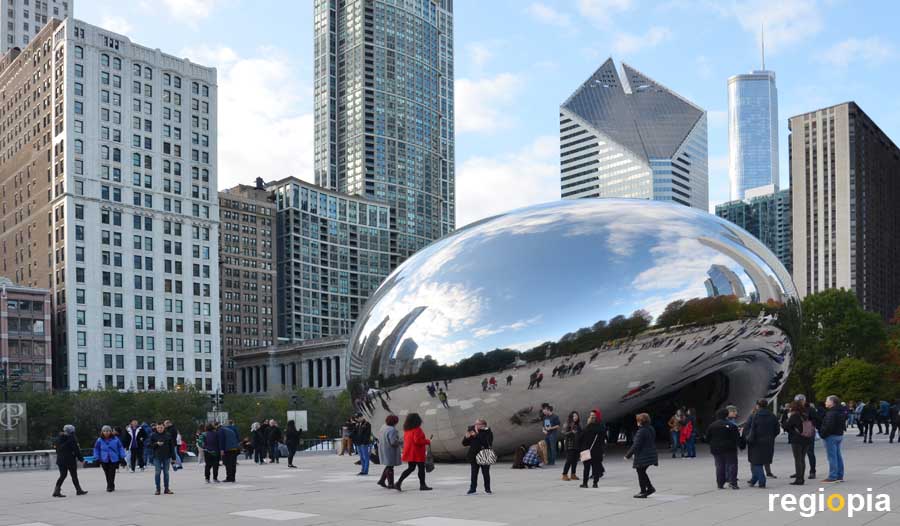
Cloud Gate
The Cloud Gate sculpture by Anish Kapoor has quickly become one of Chicago's top attractions. Because of its shape, the artwork is also called The Bean. The sculpture was welded together from highly polished stainless steel plates, reflecting the Chicago skyline. The Cloud Gate was installed at Millenium Park in 2006 and weighs around 100 t. The Bean is 13 m high, 10 wide and 20 m long. The Cloud Gate is especially popular among Instagram users and as background for selfies.
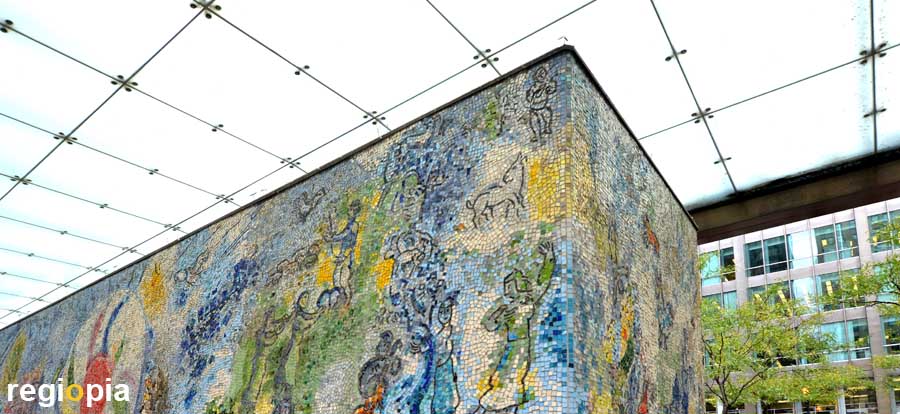
Marc Chagall
Another artwork in public space was designed by Marc Chagall. His work Four Seasons faces the Chase Bank at Dearborn / Monroe. The colored mosaic is on a 21 m long, 4 m high and 3 m wide block. The sculpture of the Russian-French artist was donated by the Frederick H. Prince Foundation. Prince was the owner of Armor and Company, one of the largest meat producers in the USA.
The artwork has been outdoor since its inauguration in 1974. The weather has harmed the Four Seasons, so the sculpture had to be renovated in 1994 and got a protective glass roof.
Tip: Marc Cahagall also designed the colorful windows at the Art Institute of Chicago.
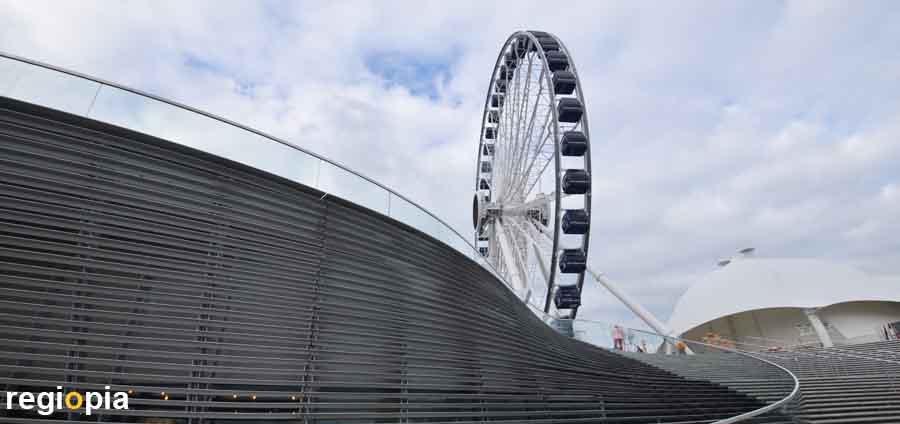
Navy Pier
The Navy Pier is one of the tourist attraction of Chicago. The pier stretches about 1 kilometer into Lake Michigan and has restaurants, museums, shops and a Ferris wheel. The Shoreline Water Taxi boats also start from here, connecting the Navy Pier with another mooring station on the lake. The Navy Pier is an amusement park in the water. The concept was created by Daniel Burnham, who had designed a continuous landscaping and leisure area on Lake Michigan, in his Plan of Chicago from 1909. Chicago owes its beaches and lakeside parks to this great vision. The Navy Pier was opened in 1916.
Daniel Burnham also designed the Flatiron Building in New York. A quote from Burnham reads: No small plans! They have no magic to stir men's blood!
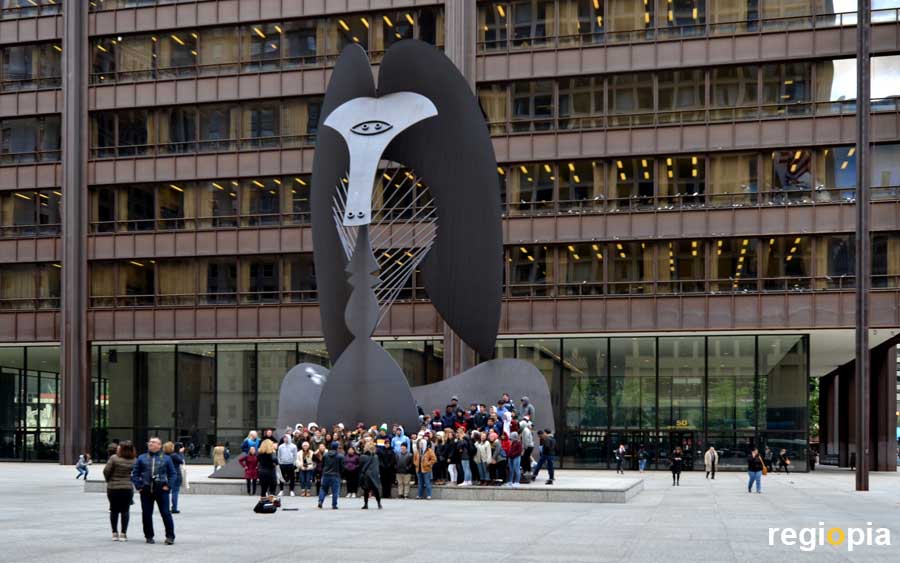
The Picasso
In Chicago, there are many great works of art on squares in front of skyscrapers. The Picasso was the first large-scale sculpture on public space in Chicago. The sculpture by Pablo Picasso was unveiled in 1967 on Daley Plaza. The square was created with the construction of the Chicago Civic Center (today Richard J. Daley Center). The skyscraper of C.F. Murphy, SOM and other architects is a reminiscent of the office towers by Mies van der Rohe, but there is one crucial difference - the Chicago Civic Center is not black. A new material was introduced to the architecture, the Cor-Ten ssteel. The steel rusts and protects itself this way against corrosion.
Pablo Picasso uses the same material for his 15m high sculpture, which has no title. This inevitably led to speculation about what the artwork represents. The speculations range from Afghan hound, baboon head, a bird, aardvark, Anubis to Sylvette David, a model of Picasso. Since the artwork has no name, it is just called The Picasso. The artist did not take any fee, even though he was offered $ 100,000.
Picasso Museums:
Museo Picasso Barcelona, Musée Picasso Paris, Musée Picasso Antibes
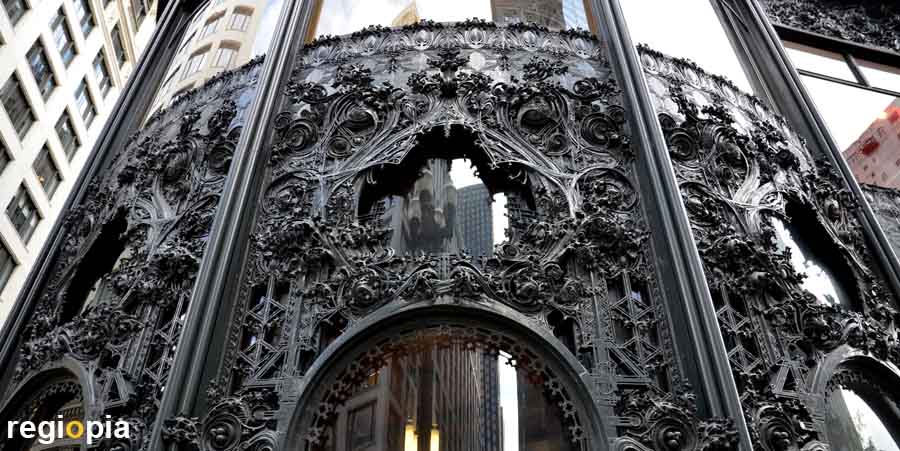
Sullivan Center
The architect Luis Henri Sullivan was a representative of the Chicago School, which had formed after the Great Fire of 1871. Their structures were built as fire-resistant steel skeleton buildings, enabling large shop windows on the ground floor. The office floors got bigger windows too. The Sullivan Center was the prototype of this construction and was built in 1904 for the department store Schlesinger & Mayer. But it was sold to Carson Prie Scott in the same year. The Carson Prie Scott Building was renamed Sullivan Center in 2007. The building is considered the most beautiful department store in Chicago due to the filigree cast-iron entrance.
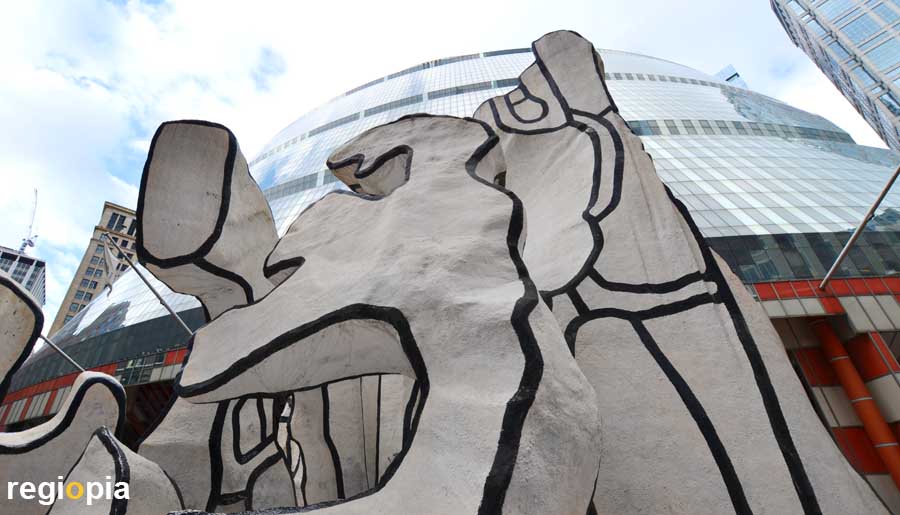
Jean Dubuffet
The sculpture Monument with Standing Beast by Jean Dubuffet stands in front of the James R. Thompson Center by Helmut Jahn. The sculpture made of fiberglass was unveiled in 1984 and is about 9 m high. The white structure from the Hourloupe series with black edging, represents an animal, a gate, a tree and architecture. You can not really identify these figures. The people of Chicago just call it "Snoopy in a bender".
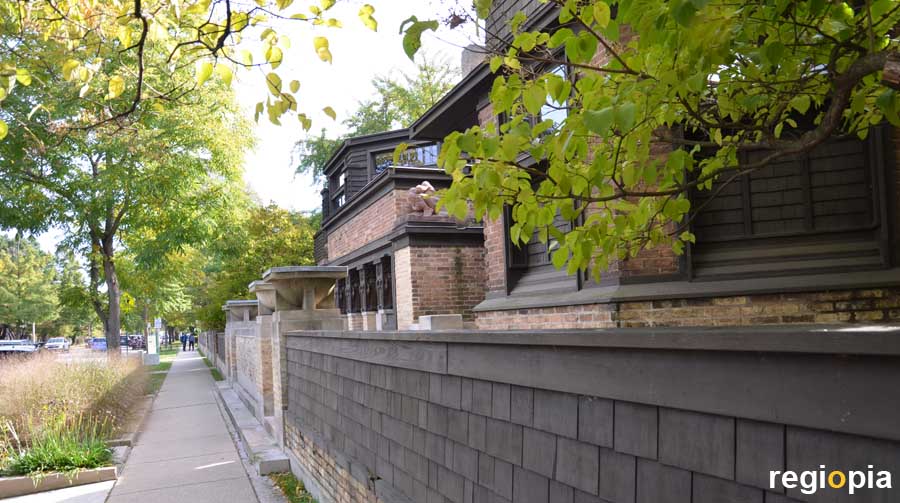
Frank Lloyd Wright at Oak Park
The Chicago suburb of Oak Park is home to some houses by the famous architect Frank Lloyd Wright, including the "Arthur Heurtley House" (photo) and the "Frank Lloyd Wright Home and Studio".
Map Chicago Sights
ads
Chicago Travel Guide
Welcome to Chicago
With a population of around 2.7 million inhabitants, Chicago is the third-largest city in the USA. The New Yorkers used to called Chicago "Second City", but Chicago was the first city to build skyscrapers, even before New York. Chicago is also called the "Windy City", due to the cold wind from Canada and some people say, because of the "windy" businesses. The name "Chicago" originates from the people of the Potawatomi, who lived around Lake Michigan, before the europeans explored america.
ads
ads


